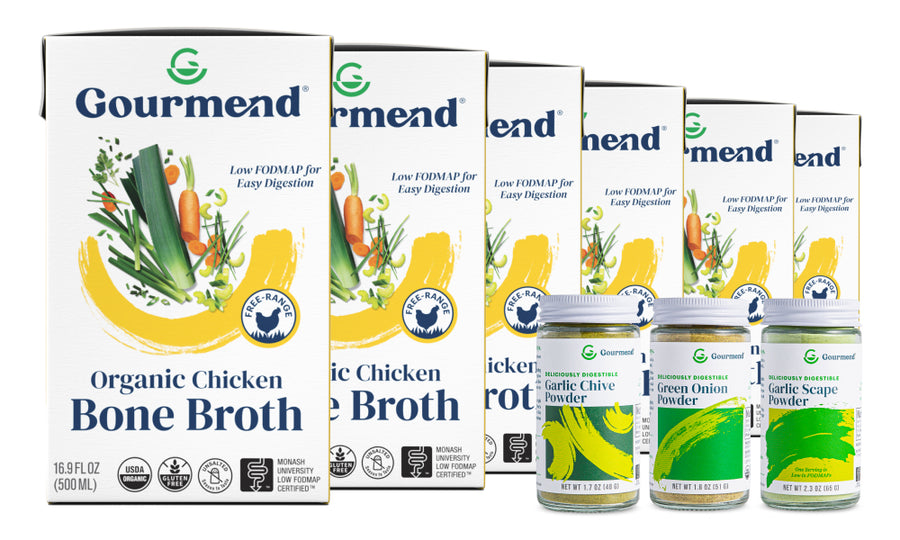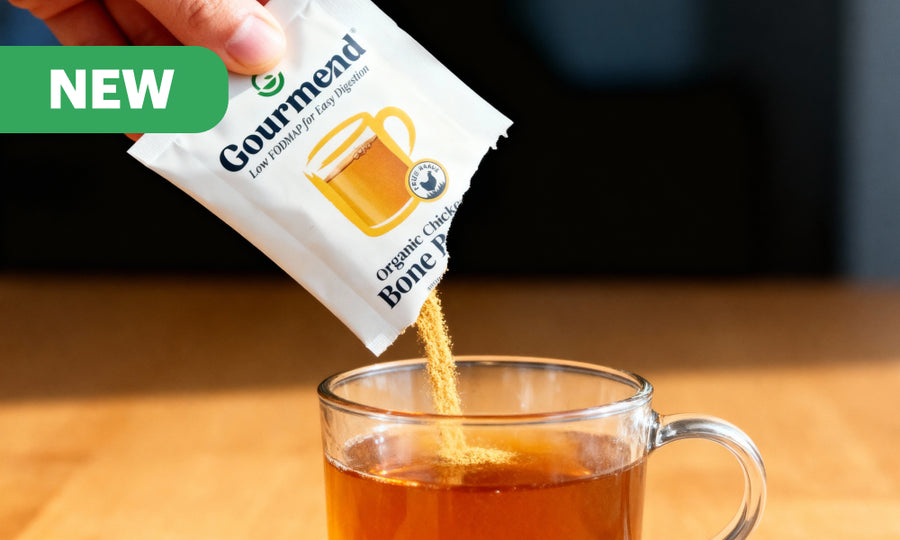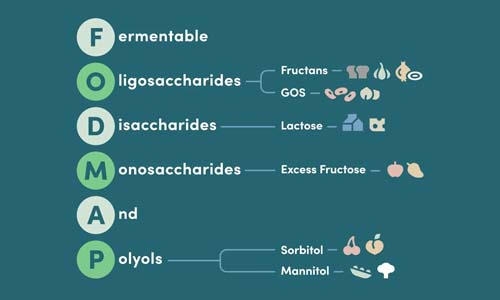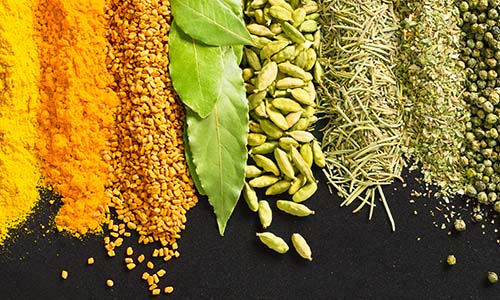Is Broccoli Low FODMAP? The Truth About Portions
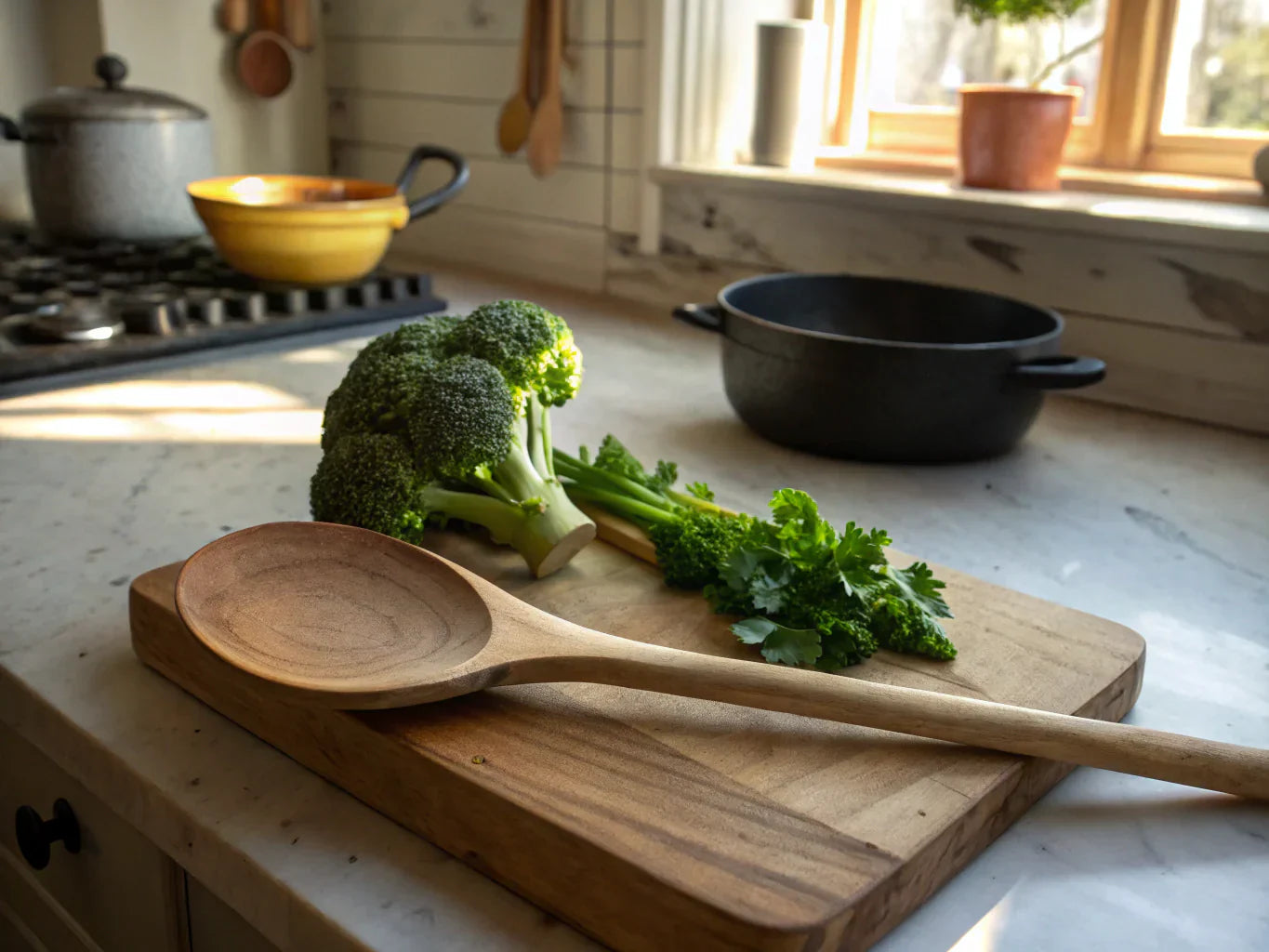
Yes, broccoli is low FODMAP when you eat the right parts in the right amounts. The key is understanding that different parts of broccoli contain different FODMAP levels—the heads and florets are your best bet for larger servings, while the stalks require more careful portion control. This distinction matters because knowing exactly which parts to prioritize can mean the difference between enjoying a satisfying serving of this nutritious vegetable and experiencing uncomfortable digestive symptoms.
Key Takeaways
- Broccoli is low FODMAP when consumed in the right parts and appropriate amounts.
- The heads and florets of broccoli allow for larger servings with lower FODMAP content.
- The stalks of broccoli contain higher FODMAP levels and require careful portion control.
- Choosing the correct parts of broccoli helps avoid digestive discomfort.
Table of Contents
- Understanding the Low FODMAP Diet
- Broccoli FODMAP Content Breakdown
- Broccolini vs. Broccoli Comparison
- Practical Serving Guidelines for Low FODMAP Success
- Cooking Methods for Better Digestion
- Common Mistakes to Avoid
- Building Balanced Low FODMAP Meals
- Creative Low FODMAP Broccoli Recipes
- Supporting Your Low FODMAP Journey
- Your Path Forward with Broccoli
If you're following a low FODMAP diet to manage IBS or digestive sensitivities, you've probably found yourself scrutinizing every ingredient that goes into your meals. Broccoli often creates confusion because it has a reputation for causing gas and bloating, but the reality is more nuanced than you might expect.
Understanding the Low FODMAP Diet
The low FODMAP diet restricts fermentable carbohydrates that can trigger gut symptoms in sensitive individuals. FODMAP stands for Fermentable Oligosaccharides, Disaccharides, Monosaccharides, and Polyols—a mouthful of scientific terms that essentially describes sugars and fibers your gut bacteria love to feast on. For more in-depth information on FODMAPs, you can visit the Monash University FODMAP resource.
When these compounds reach your large intestine undigested, they ferment and create gas. They also draw water into your intestines, which can lead to bloating, cramping, and changes in bowel movements. For people with IBS, this process can be particularly uncomfortable.
The diet works in three phases: elimination, reintroduction, and personalization. During elimination, you remove high FODMAP foods for several weeks to calm your digestive system. Then you systematically reintroduce foods to identify your personal triggers. Finally, you create a personalized eating plan based on what you can and cannot tolerate.
Research shows this approach reduces gut symptoms in about 75% of people with IBS, making it one of the most effective dietary interventions for digestive health. The goal isn't to restrict your diet forever—it's to give you the knowledge and tools to eat confidently.
Broccoli FODMAP Content Breakdown

Here's where things get interesting with broccoli fodmap levels. Not all parts of the broccoli plant are created equal when it comes to FODMAP content. The heads and florets—the tree-like parts we typically think of as "broccoli"—are low FODMAP in servings up to about one cup or 75 grams.
The stalks tell a different story. These thick, fibrous stems contain higher levels of excess fructose, making them moderate to high FODMAP when you exceed about one-third cup or 45 grams. This explains why some people experience digestive discomfort after eating broccoli—they might be consuming larger portions of the stalks without realizing the FODMAP difference.
When we look at broccoli low fodmap serving guidelines, the Monash University research shows you can safely enjoy up to three-quarters to one cup of broccoli heads and florets. Beyond that amount—we're talking over 2.5 cups—the FODMAP load increases to moderate levels.
Broccolini vs. Broccoli Comparison
Broccolini, that elegant hybrid of broccoli and Chinese broccoli, flips the script entirely. While regular broccoli heads are low FODMAP friendly, broccolini heads become high FODMAP at one cup servings. However, broccolini stalks are low FODMAP up to one cup—the exact opposite of regular broccoli.
This means if you're cooking with broccolini, you'll want to limit the floret portions to about half a cup, but you can enjoy the stalks more freely. Many people discard broccolini stalks, but they're actually edible, nutritious, and gut-friendly when prepared properly.
Understanding these distinctions helps you make informed choices about which vegetables to include in your low FODMAP meal planning. Both vegetables provide excellent nutrition—fiber, vitamins K and C, calcium, iron, and potassium—supporting your health even while following dietary restrictions.
The bottom line is that both broccoli and broccolini can absolutely fit into your low FODMAP eating plan when you pay attention to which parts you're eating and how much. This knowledge empowers you to enjoy these nutritious vegetables without the guesswork or anxiety that often comes with managing digestive sensitivities.
Practical Serving Guidelines for Low FODMAP Success
Getting your portions right makes all the difference when including broccoli in your low FODMAP meals. For regular broccoli, stick to three-quarters to one cup of heads and florets—that's roughly the size of a tennis ball or what fits comfortably in your cupped hands. When it comes to broccoli stalks, keep portions to one-third cup or about 45 grams to stay within low FODMAP limits.
With broccolini, flip your approach. Limit the heads to half a cup servings, but feel free to use up to one cup of those tender stalks that many people mistakenly throw away. These stalks add wonderful texture to stir-fries and can be sliced thin for salads or roasted until crispy for a satisfying side dish.
We recommend using the Monash University Low FODMAP App as your go-to resource for the most current serving size information. FODMAP research continues to evolve, and this app provides evidence-based updates that can help you make confident food choices without second-guessing every meal.
Cooking Methods for Better Digestion

How you prepare broccoli can significantly impact your digestive comfort. Steaming broccoli until it's bright green and tender-crisp often proves easier to digest than raw florets, while still preserving most of the nutritional benefits. Roasting brings out natural sweetness and creates appealing caramelized edges that make vegetables more enjoyable.
For those particularly sensitive to fiber, try pureeing cooked broccoli into soups or smoothies. This breaks down the cellular structure while maintaining the nutritional value. Adding a splash of our Low FODMAP Organic Vegetable Broth during cooking enhances flavor without introducing high FODMAP ingredients like onions or garlic that appear in conventional broths.
Blanching and shocking—briefly boiling then plunging into ice water—helps reduce some of the compounds that can cause gas while maintaining that satisfying crunch. This technique works especially well when you're meal prepping broccoli for salads or grain bowls throughout the week.
Common Mistakes to Avoid
One of the biggest errors people make is assuming all green vegetables affect them the same way. Just because you react to one cruciferous vegetable doesn't mean you'll react to all of them. Broccoli's FODMAP profile differs significantly from cauliflower, Brussels sprouts, or cabbage, so test each one individually during your reintroduction phase. For more tips, check out our FODMAP blog for helpful articles on navigating these differences.
Another common pitfall is eyeballing portions instead of measuring, especially during the elimination phase. That "small serving" might actually be pushing you into moderate FODMAP territory. Use measuring cups or a kitchen scale until you develop a reliable sense of appropriate portion sizes.
Don't make the mistake of avoiding broccoli entirely based on its gassy reputation. The digestive discomfort often attributed to broccoli typically comes from eating too much of the stalks or combining it with other high FODMAP foods in the same meal. When prepared mindfully and portioned correctly, most people following a low FODMAP diet tolerate broccoli quite well.
Building Balanced Low FODMAP Meals
Broccoli shines when paired with other low FODMAP ingredients to create satisfying, nutritious meals. Try combining your measured portion of broccoli florets with quinoa, grilled chicken, and a drizzle of olive oil infused with Low FODMAP Garlic Scape Powder for a complete meal that won't trigger symptoms.
Consider using broccoli as part of a colorful vegetable medley alongside carrots, bell peppers, and bok choy. This approach gives you variety in flavors, textures, and nutrients while keeping your overall FODMAP load manageable. Each vegetable contributes different vitamins and minerals, supporting your overall health during the elimination phase. For more meal ideas, explore our Low FODMAP Recipes blog.
Remember that the low FODMAP diet is temporary for most people. As you move through reintroduction and personalization phases, you may discover you can tolerate larger portions of broccoli or that certain preparation methods work better for your digestive system than others. The key is approaching this process with patience and curiosity rather than fear or restriction.
Creative Low FODMAP Broccoli Recipes
 broccoli fodmap">
broccoli fodmap">
Garlic-Infused Roasted Broccoli
Toss three-quarters cup of broccoli florets with garlic-infused olive oil, salt, and a squeeze of lemon juice before roasting at 425°F until edges turn golden. The garlic oil provides that savory depth without the FODMAP load, while lemon brightens the entire dish.
Broccoli Quinoa Power Bowl
Combine steamed broccoli florets with fluffy quinoa, diced cucumber, and fresh chives for a nutrient-dense meal. Dress with olive oil, lemon zest, and a pinch of our Low FODMAP Garlic Chive Powder for flavor that supports your digestive comfort.
Asian-Inspired Broccoli Stir-Fry
Stir-fry measured portions of broccoli florets and broccolini stalks with carrots and bok choy in sesame oil. Finish with tamari, fresh ginger, and scallion greens for an umami-rich dish that proves low FODMAP eating doesn't mean sacrificing bold flavors. For more inspiration, try our Low FODMAP Broccoli Sausage Pasta recipe.
Creamy Broccoli Soup
Puree cooked broccoli florets with lactose-free milk and our Low FODMAP Organic Vegetable Broth for a silky soup that's gentle on sensitive stomachs. Add fresh herbs like chives or parsley for color and additional flavor complexity.
Broccoli and Cheddar Frittata
Fold blanched broccoli florets into beaten eggs with aged cheddar cheese and fresh herbs. This protein-rich dish works beautifully for breakfast, lunch, or dinner while keeping your broccoli portions perfectly controlled. For more frittata ideas, check out our Ultimate Low FODMAP Frittata recipe.
Supporting Your Low FODMAP Journey
Successfully navigating the low FODMAP diet requires more than just knowing which foods to eat—it demands quality ingredients that support your goals. That's where Gourmend Foods comes in. Our organic, low FODMAP certified broths and seasonings eliminate the guesswork from cooking, replacing symptom-triggering ingredients like onions and garlic with flavorful alternatives like chives and scallion greens.
When you're building meals around properly portioned broccoli, having reliable pantry staples makes all the difference. Our Pantry Starter Pack enhances the natural sweetness of roasted broccoli without hidden additives or artificial flavors, while our seasoning blends add complexity to simple preparations. Every Gourmend product is crafted with clean, organic ingredients—no shortcuts, no compromises.
For more inspiration and guidance on low FODMAP cooking, explore our collection of tested recipes at gourmendfoods.com/low-fodmap-recipes. These recipes take the guesswork out of meal planning while ensuring every dish delivers on both flavor and digestive comfort.
Your Path Forward with Broccoli
Understanding whether broccoli is low FODMAP comes down to choosing the right parts and respecting portion sizes. Focus on the florets and heads while limiting stalks, measure your servings carefully, and pay attention to how your body responds. With proper preparation and mindful portioning, broccoli can absolutely be part of your low FODMAP toolkit, providing essential nutrients while supporting your digestive wellness goals.
Remember that the low FODMAP diet is a journey of discovery, not a permanent restriction. As you work through elimination, reintroduction, and personalization phases, you'll develop a deeper understanding of how broccoli and other foods affect your individual system. Trust the process, stay curious about your responses, and celebrate the small victories along the way—like enjoying a perfectly seasoned bowl of roasted broccoli without worry.
Check out our Low Fodmap Organic Vegetable Broth
Frequently Asked Questions
Is broccoli okay with IBS?
Broccoli can be tricky for people with IBS because it contains moderate amounts of FODMAPs, particularly fructans and mannitol, which can trigger symptoms like bloating and gas. However, small servings of broccoli, especially the florets, may be tolerated by some individuals. It's best to introduce broccoli gradually and monitor your body's response to determine your personal tolerance.
What vegetables are low FODMAP?
Low FODMAP vegetables include carrots, cucumbers, spinach, zucchini, bell peppers, and green beans. These vegetables are generally well tolerated because they contain fewer fermentable carbohydrates that can cause digestive discomfort. Including a variety of these in your diet can help manage symptoms while ensuring you get essential nutrients.
Why is broccoli not low in FODMAP?
Broccoli is not considered low in FODMAP because it contains significant amounts of fructans and mannitol, types of fermentable carbohydrates that can be difficult for some people to digest. These substances ferment in the gut, producing gas and leading to symptoms like bloating and abdominal pain. The stalks have higher FODMAP content than the florets, so portion size and which part you eat matter.
Is broccoli OK with Sibo?
Broccoli might not be the best choice for those with SIBO (Small Intestinal Bacterial Overgrowth) because its FODMAP content can feed the excess bacteria present in the small intestine, worsening symptoms like bloating, pain, and diarrhea. Some people with SIBO may tolerate small amounts of broccoli florets, but it's generally recommended to follow a low FODMAP diet during active treatment to reduce bacterial overgrowth.
Can broccoli irritate gut?
Yes, broccoli can irritate the gut, especially in individuals sensitive to FODMAPs or those with conditions like IBS or SIBO. The fermentable fibers in broccoli may lead to gas production and discomfort. However, for many people without such sensitivities, broccoli is a healthy, fiber-rich vegetable that supports digestive health.
What is the biggest trigger for IBS?
The biggest trigger for IBS varies between individuals, but common culprits include high FODMAP foods, stress, and certain lifestyle factors. Foods rich in fermentable carbohydrates like onions, garlic, and wheat often provoke symptoms. Managing triggers typically involves dietary adjustments, stress reduction, and sometimes medication under professional guidance.
